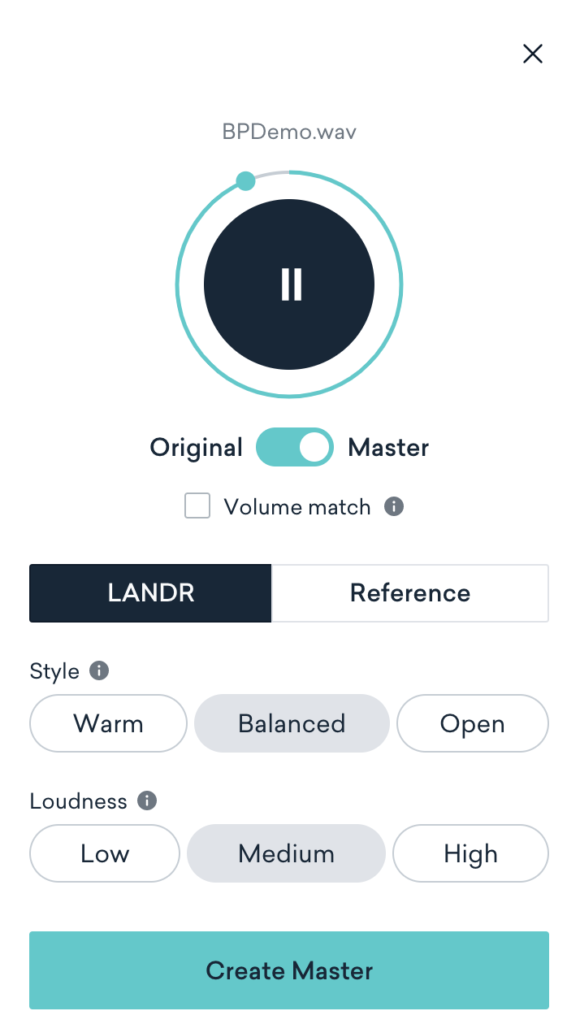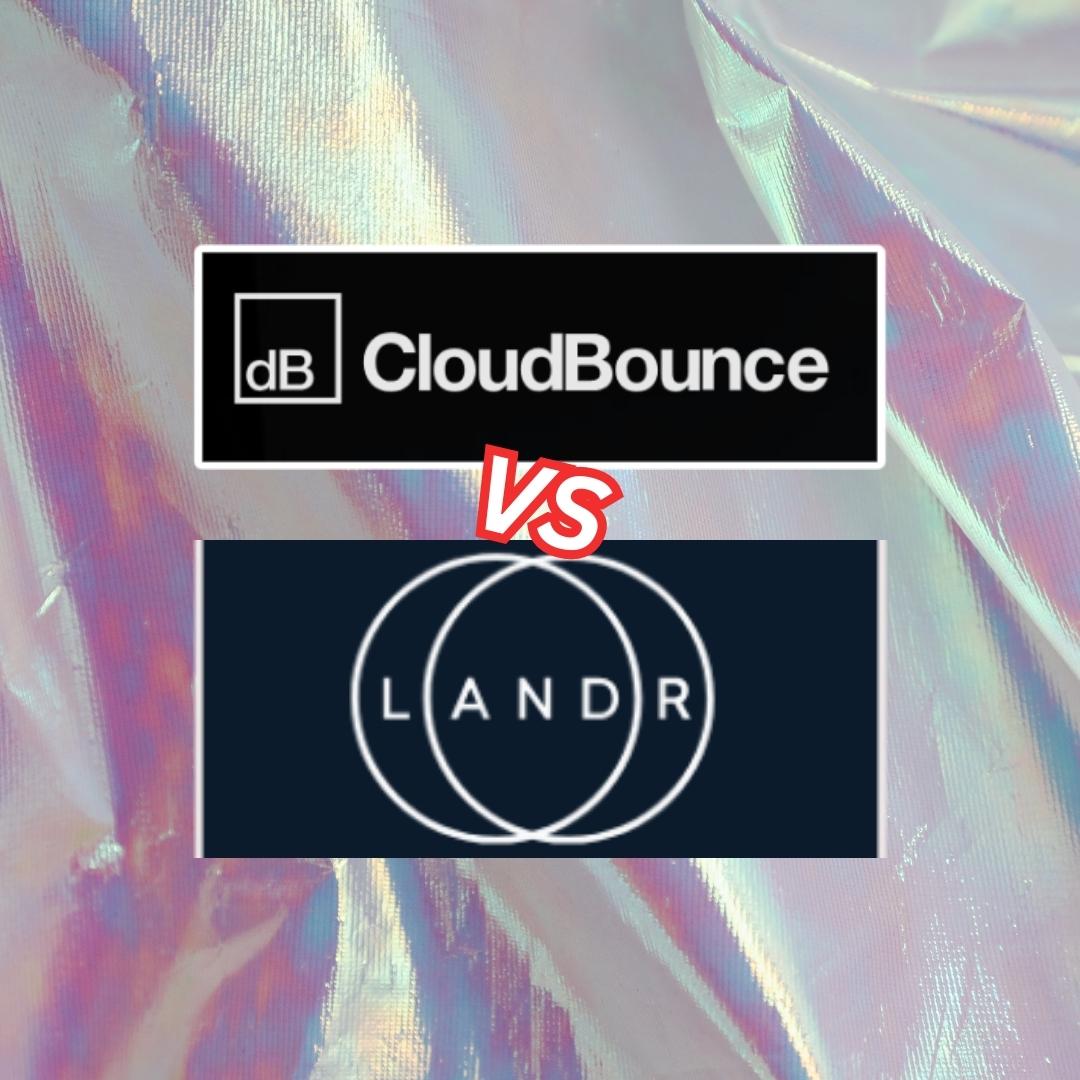If you have ever mixed and mastered your music, you know how laborious and daunting the process can be. On the contrary, if you send the music to be mastered in the studio, it can take days before you receive the piece back, and with the corrections, it can even be a few weeks by the time it is ready to be published. You will also see the difference in your pocket; good quality mastering services can be costly.
For a few years now, cloud-based mastering services have offered work that, up until recently, was only provided by traditional mastering engineers. With the popularisation of AI technology, the whole creative world is looking into the future with uncertainty.
You may be asking yourself the same question – is the cloud-based service the future of mastering? Will professional audio engineers lose their jobs as the technology becomes more refined?
While it is impossible to say what will happen in a few years, in this article, I will explore and compare two of the most popular mastering services out there to give you an honest overview of what they can offer today: CloudBounce and Landr.
An introduction to cloud-based mastering services
The purpose of mastering, as the last step in the music post-production process, is to make sure the music is playable on all audio systems and formats. This has been traditionally done by listing to the track and manually applying compression, limiters, EQ, automation, and other effects that help the song meet industry standards and succeed commercially.
Online, cloud-based mastering services use an algorithm to turn a raw mix into a polished master, and no human ear or touch is involved in the process. The software’s advanced AI will automatically make the adjustments and deliver a mastered track ready for distribution. Although mostly automated, the process allows for some customization that varies depending on the product. Whether it is a solution for your music depends greatly on the results you are looking to achieve.
Whenever you can, I always recommend using professional engineering services to master your tracks: their level of attention to detail and personalization are still unmatched by the automated mastering services.
That said, if you can only spend a few bucks, you will undoubtedly be better off investing them in a cloud-based service than paying a mastering engineer.
While many software options are available on the market, my personal favorites are Landr and CloudBounce. Each of them utilizes a distinct algorithm that produces a unique end result. If you’re interested in finding out about other alternatives, including those that are free, check out my review of the 12 best free online mastering services.
So let’s get into it.
CloudBounce: The overview
Launched in 2016 out of Finland and the UK, CloudBounce accrued an impressive list of partners and collaborators in the industry over the years, including Focusrite, Roli, and CD Baby. It also got hyped as Abbey Road Red alumni company. The product was created by a group of musicians, audio researchers, and engineers with the main objective of providing affordable and professional sound mastering.
CloudBounce is precisely what it says it is: a powerful, straightforward mastering platform, and they are not trying to be anything else. No fancy frills, but in what it does, it delivers magnificently.
Landr: The overview
Landr is considered a pioneer in the music industry; founded in 2012 by MixGenius, an AI company from Montreal, it received $6.2 million in funding to start off, and the investors included Nas, the founders of Cirque Du Soleil, Plus Eight Equity Fund, and others.
The platform is more of an all-rounder and offers not only mastering services but pretty decent distribution support and tons of add-ons such as DAW plugins, VSTs, and courses. They do call their product “creative tools for musicians,” so that could give you an idea.
The mastering algorithm, which took eight years of in-depth research to perfect, is aimed somewhere midway between full automatization and the ability to customize your tracks. Cloud-based mastering services are seen as designed predominantly for indie artists. In fact, many accomplished musicians use them for various purposes. Landr has worked with some big names, such as Warner Music Group, Atlantic Records, and Disney, to mention a few.
CloudBounce vs. Landr: Service
How do these online mastering platforms work exactly?
Using precise AI technology, CloudBounce takes your track, analyses it, and applies the required level of audio tweaks, such as compression, EQ, multiband, limiting, and stereo imaging.
An easy-to-navigate website offers a range of options and presets to customize the master based on genre. An impressive list of characteristics to choose from includes 15+ genre options. With this feature, you have the ability to fine-tune different aspects of the audio. CloudBounce seems to offer more freedom in terms of customizing your tracks. Changing volume, warmth, brightness, and bass is simple and intuitive.
Based on the mixings I listened to for the purpose of this review, CloudBounce provides outstanding mastering results and has a more than satisfying approach to low-end. The ultimate blend had a clear sound and was not overrun with excessive inputs.
Both platforms let you master the whole album and preview all the tracks instantly rather than uploading a single track, which seems pretty obvious, but CloudBounce didn’t offer this feature until recently.
Uploading your mix couldn’t be easier in both cases. After uploading the track to Landr, the platform enables you to listen to a 30-second real-time comparison that is impeccable for direct A/B comparisons. The switching is virtually instantaneous too. The uploading and mastering process took a bit longer with CloudBounce than with Landr, and the final effect was very different too.
Compared with the former, Landr provides a more automated mastering service, ultimately giving you less ability to add some final tweaks.
You have the option to choose the style between “Warm,” “Balanced,” and “Open,” and to adjust the volume anywhere from low to medium to high.

Still, you won’t get the EQ dials, but they long have had the option to upload a reference track, which seems to be a pretty sweet perk. CloudBounce, up until recently, didn’t have that possibility, but they caught up, and now the feature is available—an awesome upgrade if you ask me.
Landr and CloudBounce both have desktop app versions, which makes navigating the platforms easier and gives you more customization options for your master. It caught my attention that none of the two has a “top and tailing” process accessible to remove empty audio, so perhaps this could be implemented in future updates.
CloudBounce vs. Landr: Price
Neither of the two is free to use, but both platforms offer some free services, and their pricing plans differ in various aspects. Let’s look at them in a bit more detail and see which one offers a better deal for the price.
It’s only fair to say that both CloudBounce and Landr give you the option to set up a free account and listen to your masters before making a decision about whether you want to download them or not.
So here is what their pricing plans look like:
CloudBounce offers both a pay-as-you-go and a subscription plan. You get a hi-res master, either 24bit Wav or 320kbps MP3 files, no matter which option you choose. The pay-as-you-go will cost you $10.90 per track, and you will get cloud storage for up to 7 days.
The subscription offer includes 3 choices: the “Infinity monthly” plan for which you will pay $21.90 per month. It includes all the features of the pay-as-you-go option plus lifetime cloud backups for your masters.
The “Infinity annual” comes with everything you get with a monthly plan for $219.99. It also saves you over 40 bucks, making it a cost-effective option to consider. On top of that, you can opt for a “Lifetime” subscription plan for $2190.
Landr, being a more versatile platform, has separate subscription plans for mastering, distribution, samples, plugins, networking, and online collab sessions. Since in this article, we focus on mastering services; I will get into details of their mastering subscription plans. If you are eager to explore other services offered by Landr, check out my in-depth review of the platform.
You also get a pay-as-you-go option starting from $6 for an MP3 master and $10 for a single WAV master. ProMastering subscription gives you unlimited MP3, WAV & HD WAV masters for $299.99 per year (as I am writing it, you can get a deal on this plan which will give you 36% off with the code MASTERPRO36 ).
It’s worth mentioning that they offer “studio” plans which deliver unlimited MP3 masters, 36 WAV masters, a cool software bundle, collab tools, and unlimited distribution (so basically almost everything Landr has to offer) for $19.99 per month or $149.99 per year. Let’s be honest; it is one of the best deals you can get.
CloudBounce: pros and cons
Pros
- A high level of customization for an online mastering service
- Excellent low-frequency detail
- High-res version available on a pay-as-you-go
Cons
- Limited cloud storage (up to 7 days) with single masters
- Less versatile platform (but if you are only looking to master your tracks, this is not really a con)
Landr: pros and cons
Pros
- A competitive price on studio plans
- Includes samples, plugins, and other cool bonuses with the studio plan.
- Distribution service.
- Solid AI processing for industry-standard masters
Cons
- Hi-res options are only available in the PRO plans.
- Limited mastering options (no EQ dials, etc.)
Final Verdict
CloudBounce and Landr are both excellent music mastering platforms, each with its own unique strengths.
I said that before and will do it again; if it doesn’t break your budget, hire a mastering engineer to work on your album. AI won’t give you the same personalized service, and it won’t listen to your comments or give you feedback (at least not yet). Still, there are a number of cases when using an online mastering service is just more convenient, cheaper, and faster. It helps you review your work, release good quality music online more frequently and fix an issue if you notice one.
In my personal opinion, Landr offers a better deal for the money simply because it has more features, giving you a complete solution.
You can click here to try out their studio service. (Heads-up, that is an affiliate link.)
However, if you are looking strictly for a mastering service, both options have their pros and cons. Before you decide which one to go with, I strongly recommend that you listen to the samples available online or master a track on each platform and decide which version you prefer. No matter which platform you choose, you can take my word that these high-quality AI-powered platforms will provide professionally mastered tracks ready to be shared with the world.








